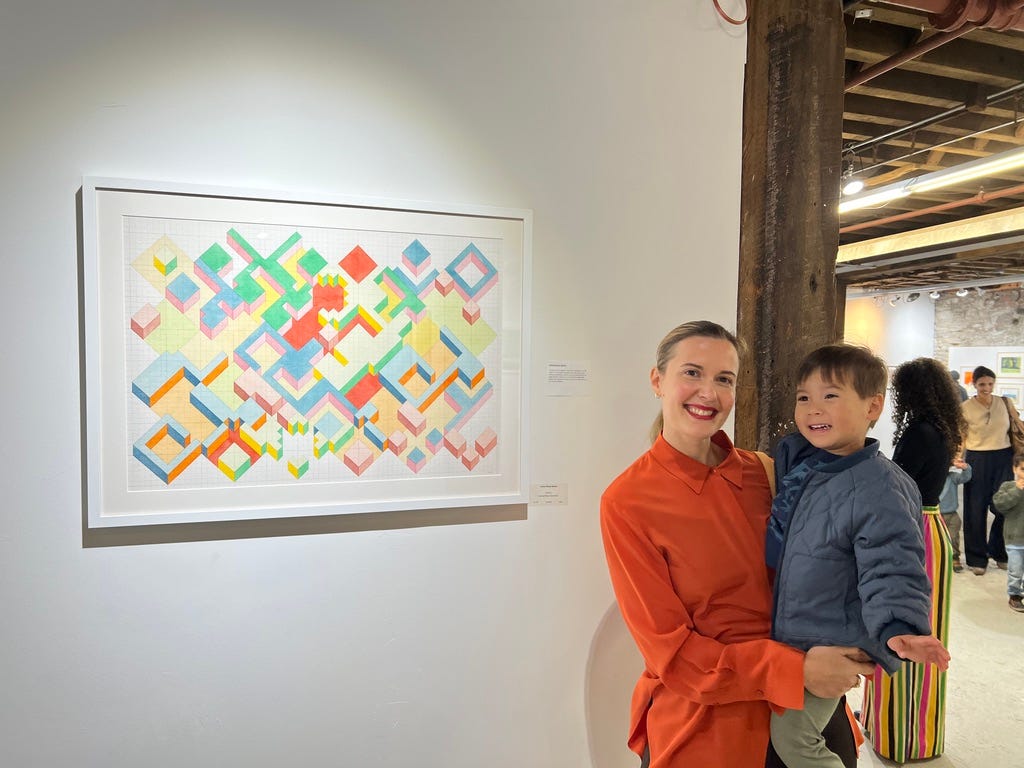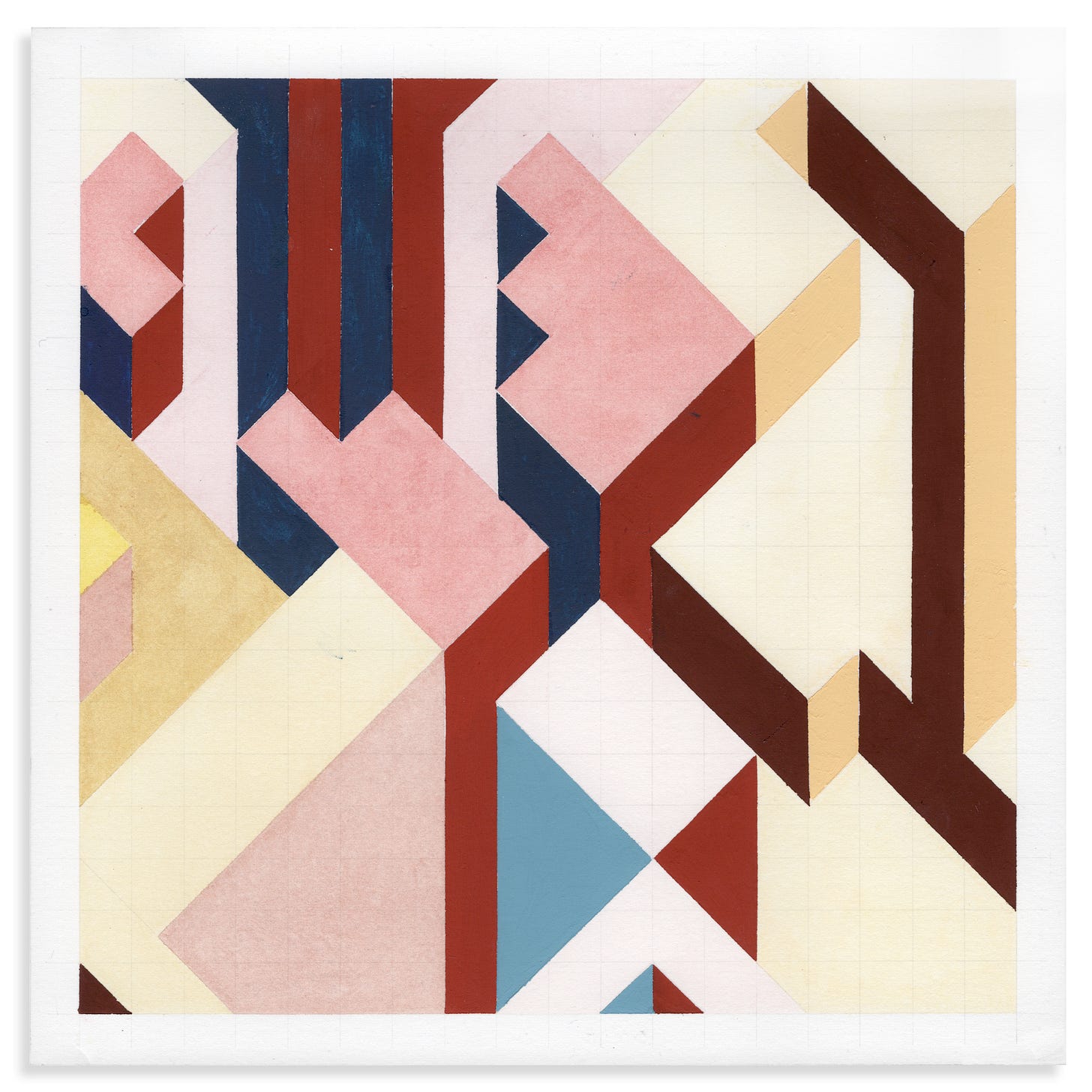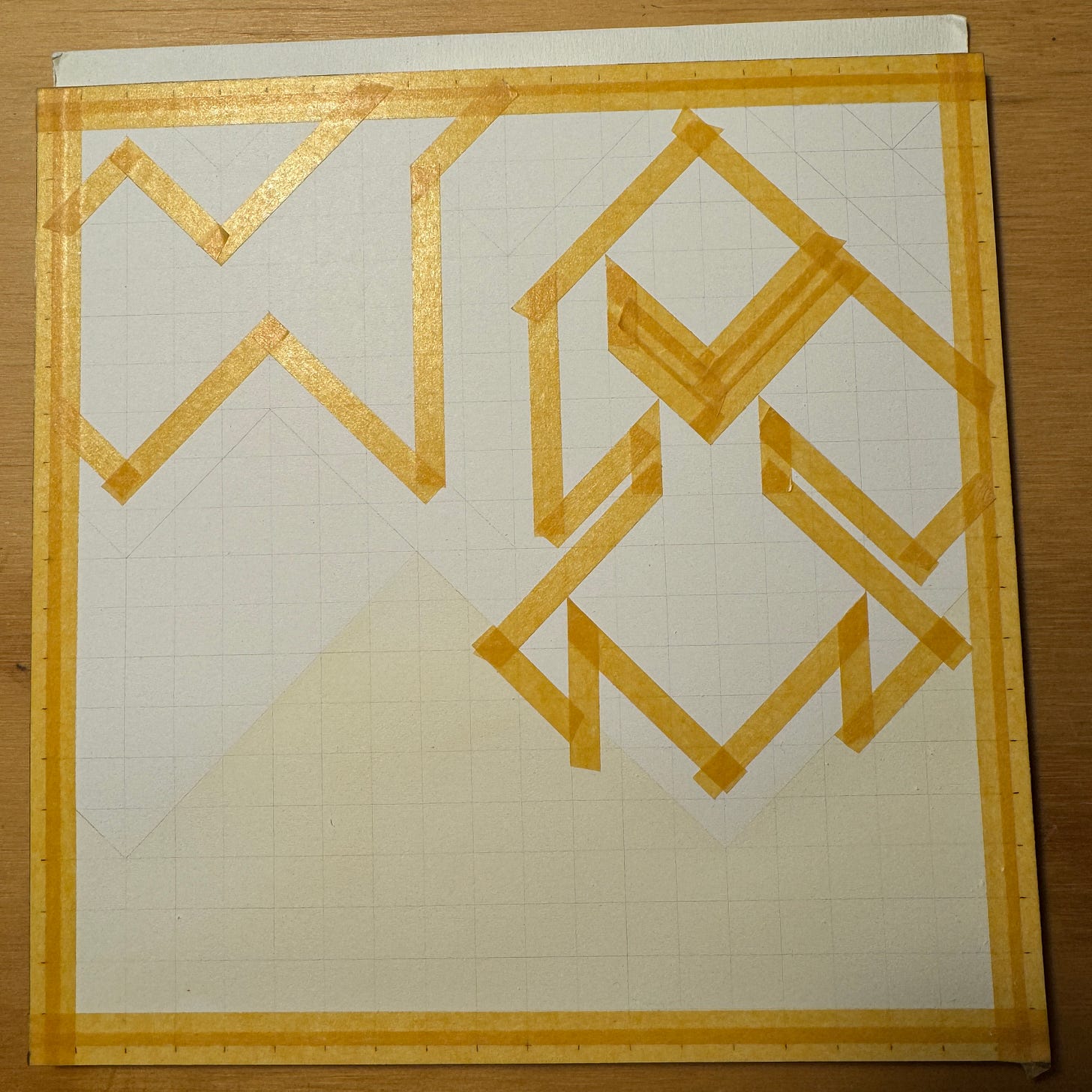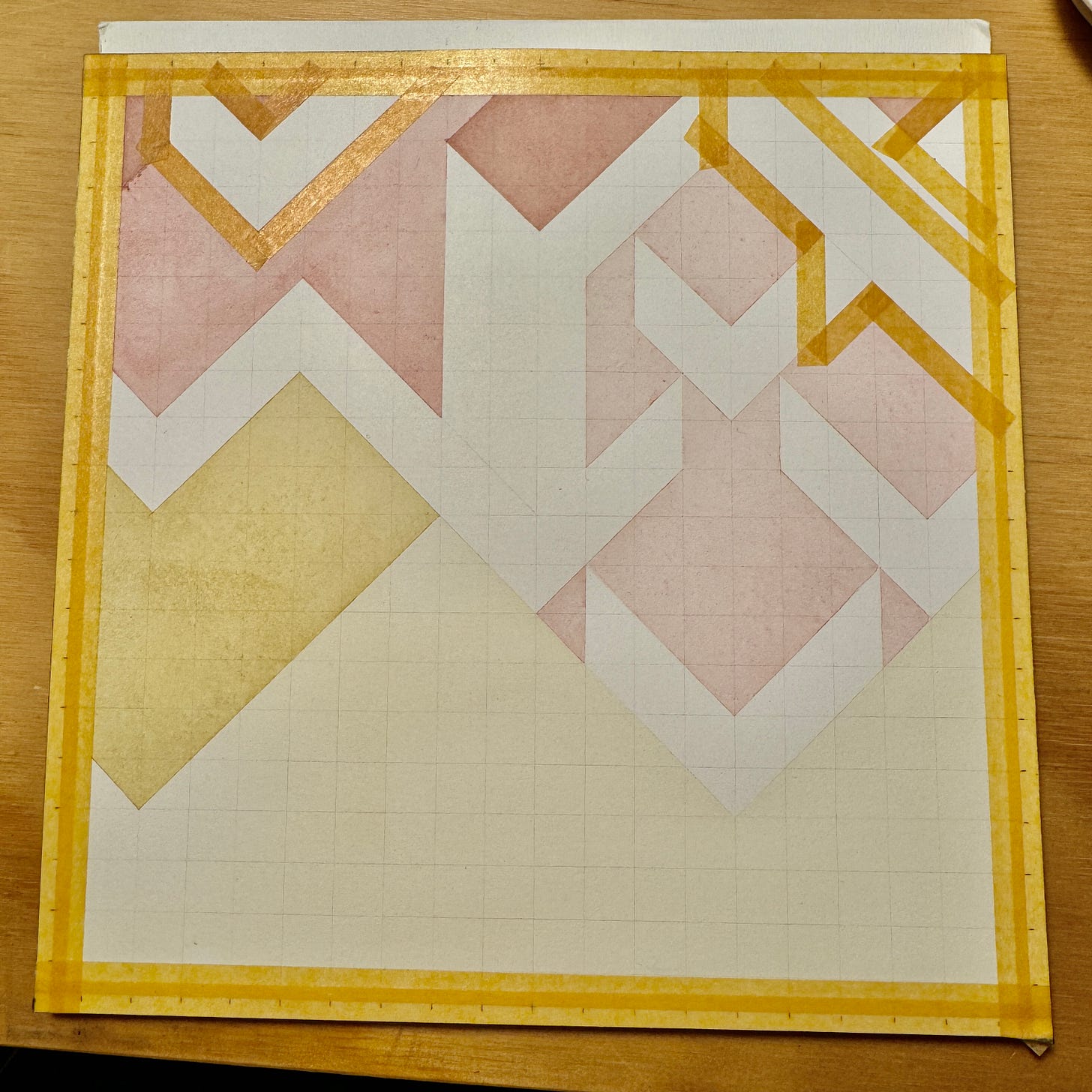Earlier this month, I had the opportunity to share one of my pieces “Courts II” with new and old friends who came out to Red Hook for the exhibition opening of Fearless Watercolors at BWAC.
It was a wonderful way to share my thinking and process IRL with other people. As I was talking about the piece, I found myself returning to themes I have been researching for over 15 years. I thought I would take the opportunity here to share a bit about that research and how it continues to inform my paintings and my architecture.
While in graduate school I began a research project that led me to Lisbon, Salvador, Rio de Janeiro, and Brasília, all current and former capital cities in the Portuguese speaking world, to research the development of public space in those cities from the fifteenth century through to today. This culminated in a book I produced as part of my thesis, 16 Squares.
I became interested in the interstices of the city, the space between buildings (in 2010 I started a blog (!) called In/Between the City which is shockingly still live?!).
A part of my research was focused on the study of ancient Greek and Roman cities and how these early models translate to the formation of cities today. The Greek city (polis) is composed of unique object-like buildings, figures, between which exists the interstitial space of the city that flows freely and undefined between an archipelago of urban artifacts.
The Roman City (urbs), by contrast, begins with a tabula rasa and is defined by public space as occupied by infrastructure. In this case public space becomes the figure; it defines the shape of the city. The public sphere is about flow and connectivity. The city operates like a scaffolding, an infrastructural armature, for the growth of private life. Most cities today follow the Roman model of the urbs.
In my paintings and architecture, I am testing this question of figure vs. ground: public space as figure and the built environment as ground. How does form define space?
And now, on to the paintings:


Thinking About… Aldo Rossi
Aldo Rossi was a visionary architect and theorist whose work explored the profound relationship between architecture and the city. Central to his approach was the idea of the city as a repository of collective memory, where architecture serves as both a marker of history and a framework for urban life. Rossi's designs were deeply influenced by Platonic forms—simple, idealized geometric objects—which he used to create buildings that felt timeless and monumental.
His architecture often featured high contrast, solid masses with bold, unadorned forms that blurred the boundaries between scale and proportion, lending his work a dreamlike, abstract quality. By combining these elements, Rossi transformed architecture into a powerful medium for understanding the city as a unified, enduring artifact.
On My Table
I recently discovered some amazing Japanese tapes that I picked up at my local art supply store. They are semi-translucent and create these beautiful effects when layered over each other. I enjoy seeing the shapes formed by the tape by itself, before the washes of color…


This is the final call if you would like to receive one of my holiday cards in the mail! The card this year will feature my latest work — you will find it is something a little different for me — and will be printed on high quality paper. I would love for you to have one ❤️ Please share your name & mailing address at the survey link below so I know how to reach you:
Thank you so much for your interest in my creative practice.
Please do reach out if you would like any more information about my work and exhibitions.
Have a wonderful week ahead.
Until next time,
xx
Letícia









Adoro ler o que você escreve! I’m curious to see how the new series will develop. Your reading choices always give new insights on your own work. ♥️
Super interessante sua explicação sobre o desenvolvimento desse seu trabalho. Também adorei as fotos nas quais você nos mostra o uso do tape japonês, para isolar partes do trabalho, que apesar de ser uma ferramenta parece que também faz parte do colorido do produto em andamento! 🙌